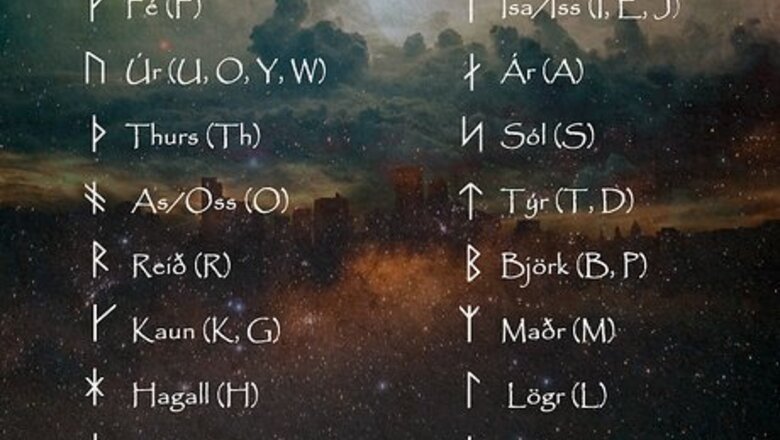
views
- Each Viking rune has a specific symbol, name, meaning, and energy.
- Viking runes come from two Nordic alphabets: the Elder Futhark and the Younger Futhark. Both are important, but the Younger Futhark was used more in Viking times.
- Viking runes are thought to have mystical powers that can be used for divination, protection, meditation, and astrology.
Younger Futhark Runes & Meanings
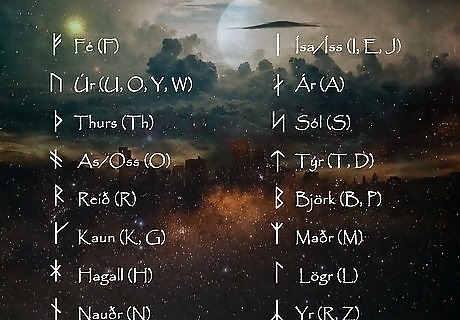
The Younger Futhark alphabet has 16 Viking runes with distinct meanings. The Younger Futhark developed at the start of the Viking Age as a shorter and simpler version of the earlier Elder Futhark. Each Viking rune in the Younger Futhark has its own symbol, name, English meaning, and believed mystic energy.The pronunciation of each rune is determined by experts using reconstructed Norse language from the Viking Age. Fé (F) – cattle, wealth. Pronounced “fey.” Warns of problems caused by unequal wealth. Úr (U, O, Y, W) – iron, rain. Pronounced “oor.” Represents how good things can still come from nothingness. Thurs (Th) – male giant. Pronounced “thor-s.” Gives power and strength. As/Oss (O) – god, mouth. Pronounced “oh-s.” Reminds you of the power of communication. Reið (R) – ride. Pronounced “ray-d.” Symbolizes a journey along your chosen path in life. Kaun (K, G) – wound. Pronounced “kow-n.” Represents what you learn from suffering or challenges. Hagall (H) – hail. Pronounced “haw-gahl.” Symbolizes a transformation from a difficult situation to something that flows naturally. Nauðr (N) – need. Pronounced “now-dr.” Represents your needs and the danger of letting a need overtake your life. Ísa/Íss (I, E, J) – ice. Pronounced “ees.” Symbolizes resistance to change. Ár (A) – a good year. Pronounced “are.” Promises good results from using your skills wisely. Sól (S) – sun. Pronounced “soh-l.” Signifies actions guided by higher powers. Týr (T, D) – Pronounced “too-r.” Refers to the Norse god Tyr. Represents law and order. Björk (B, P) – birch. Pronounced “bee-yark-an.” Symbolizes birth, rebirth, and purification. Maðr (M) – humankind. Pronounced “mawth-dr.”Represents family legacy and clans. Lögr (L) – sea. Pronounced “loh-gr.” Represents the power of water and the cleansing of unwanted things. Yr (R, Z) – yew tree. Pronounced “ew-r.” Symbolizes death and the entrance to the underworld.
Elder Futhark Runes & Meanings

The Elder Futhark has 24 runic letters, each with its own symbolic meaning. The Elder Futhark predates the Viking Age but its symbols are still used today for their believed mystical power.Each Elder Futhark rune has a unique symbol, name, English meaning, symbolism, and sound.The name of each rune is pronounced according to Old Norse language, which is what people use in spiritual practices. Conversely, its sound describes its actual function as a letter of the alphabet. In modern English, for example, the letter “j” is pronounced “jay,” but creates the sound “djuh.” Fehu (F) – cattle, wealth. Pronounced “fay-hoo.” Symbolizes prosperity and abundance. Sounds like “eff,” as in “farm.” Uruz (U) – wild ox. Pronounced “oo-rooz.” Symbolizes strength and power. Sounds like “ooh,” as in “food.” Thurisaz (Th) – giant, thorn. Pronounced “thoor-ee-saws.” Symbolizes protection, courage, and solving problems. Sounds like “th,” as in “thick.” Ansuz (A) – Refers to the Norse god Odin. Pronounced “awn-sooz.” Symbolizes wisdom, truth, and the power of communication. Sounds like “ah,” as in “car.” Raidho (R) – ride, journey. Pronounced “rye-though.” Symbolizes life’s journeys and embracing change. Sounds like “arr,” as in “rock.” Kaunan/Kenaz (K) – torch. Pronounced “cayn-awz.” Symbolizes transformation, fertility, and creativity. Sounds like a hard c or k, as in “click.” Gebo (G) – gifts, exchange. Pronounced “gay-bow.” Symbolizes partnership, generosity, and the exchange of gifts and energy. Sounds like a hard g, as in “good.” Wunjo (W) – joy or success. Pronounced “woon-yo.” Symbolizes joy, friendship, and celebrating personal goals. Sounds like “wuh,” as in “wind.” Hagalaz (H) – hail. Pronounced “ha-gah-laws.” Symbolizes change, transformation, and destruction. Sounds like “huh,” as in “hope.” Nauthiz (N) – need. Pronounced “now-these.” Symbolizes basic human needs, facing challenges, and endurance. Sounds like “en,” as in “none.” Isa (I) – ice. Pronounced “ee-saw.” Symbolizes self-reflection, tranquility, and isolation. Sounds like a short i, as in “hip.” Jera (J) – year, harvest, abundance. Pronounced “yar-aw.” Symbolizes abundance, peace, and the change of seasons. Sounds like a soft j or y, as in “year.” Eihwaz (Ei) - yew-tree, ash-tree. Pronounced “eye-wahz.” Symbolizes healing, strength, and transformation. Sounds like a long e, as in “tree.” Perthro (P) – pear tree, pear wood. Pronounced “perth-row.” This rune’s exact meaning is unclear, but interpretations include destiny, mystery, and fun. Sounds like “pee,” as in “penny.” Algiz (Z) – elk. Pronounced “all-yeez.” Symbolizes self-defense and divine protection. Sounds like “zee,” as in “zoo.” Sowilo (S) – sun. Pronounced “so-wee-low.” Symbolizes health, success, and spiritual environment. Sounds like “ess,” as in “sorry.” Tiwaz (T) – Refers to the Norse god Tyr. Pronounced “tee-wahz.” Symbolizes justice, victory, and strong leadership. Sounds like “tee,” as in “tall.” Berkana (B) – birch. Pronounced “bear-kah-nah.” Symbolizes fertility, growth, and the cycle of life and death. Sounds like “be,” as in “bird.” Ehwaz (E) – horse. Pronounced “eh-wahz.” Symbolizes loyalty, trust, and partnership. Sounds like a short e, as in “bed.” Mannaz (M) – man. Pronounced “man-nahz.” Symbolizes humanity, society, and our connections to others. Sounds like “em,” as in “mother.” Laguz (L) – water, lake. Pronounced “law-gooz.” Symbolizes dreams, emotion, and the unconscious mind. Sounds like “ell,” as in “luck.” Ingwaz (Ng) – Refers to the Norse god Freyr. Pronounced “ing-wahz.” Symbolizes unity, harmony, and fulfilling personal goals. Sounds like “ing,” as in “sing.” Dagaz (D) – day. Pronounced “daw-gahz.” Symbolizes enlightenment, transformation, balance, and a new awakening. Sounds like “dee,” as in “day.” Othala (O) – home. Pronounced “oh-thaw-law.” Symbolizes inheritance, ancestry, and the legacy of the values passed down from generation to generation. Sounds like “oh,” as in “dot.”
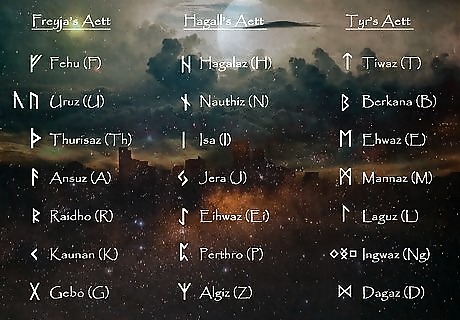
Elder Futhark runes are sorted into three symbolic groups. Each group of runes is called a family, or aett. The three families each have their own symbolism and purpose. They all begin with one of the three mother runes: Fehu, Hagalaz, and Tiwaz. Freyja’s Aett (Fehu-Wunjo) symbolizes abundance, fertility, and nature. Together, its runes represent the cycle of life. Hagall’s Aett (Hagalaz-Sowilo) symbolizes transformation, change, and time. The runes represent cycles of destruction and renewal. Tyr’s Aett (Tiwaz-Othala) symbolizes justice and social order. This group of runes represents order and stability.
How to Use Runes in Spiritual Practices

Do a meditation exercise. Find a rune that appeals to you and create a runic meditation card following these steps: Use a small piece of white paper, about 3 in × 5 in (7.6 cm × 12.7 cm) in size. Paint your chosen rune on the card in bright red. Sit comfortably with the card at eye level. Begin to breathe evenly in a rhythm you can maintain. Concentrate on the shape of the rune and silently chant the name three times. Pause, then chant again three times. Repeat this process throughout. Concentrate on the rune’s shape, sound, and your breath and posture. After several minutes, close your eyes and visualize the shape. Continue practicing until you can meditate this way for ten minutes.
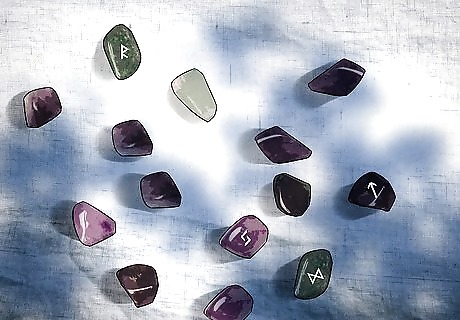
Predict the future with divination. Carve each rune into an individual piece of wood. Throw the runes onto a white cloth and note which runes land upright. Some people believe that the combined meanings of those runes tell you about your life and future. In modern-day practices, people often use rune divination sets or rune tarot cards.
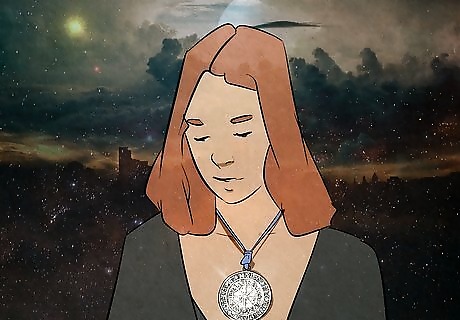
Use runes to make a lucky talisman or amulet. Make a traditional runic talisman by carving runes into wood, bone, stone, or metal, or write it on paper. Wear a runic necklace as an amulet for good luck and protection. If the inscribed object has a functional purpose, like a pen or car, the runes are thought to give success in whatever way the object is used.
How to Find and Understand Your Birth Runes
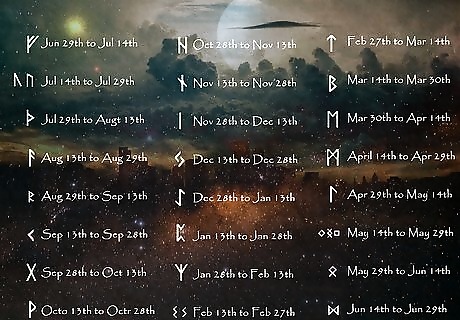
Use your birthdate to find your first birth rune. Birth runes are based on the Elder Futhark alphabet. This rune is also called the solar rune. Fehu – June 29th to July 14th Uruz – July 14th to July 29th Thurisaz – July 29th to August 13th Ansuz – August 13th to August 29th Raidho – August 29th to September 13th Kenaz – September 13th to September 28th Gebo – September 28th to October 13th Wunjo – October 13th to October 28th Hagalaz – October 28th to November 13th Nauthiz – November 13th to November 28th Isa – November 28th to December 13th Jera – December 13th to December 28th Eihwaz – December 28th to January 13th Perthro – January 13th to January 28th Algiz – January 28th to February 13th Sowilo – February 13th to February 27th Tiwaz – February 27th to March 14th Berkana – March 14th to March 30th Ehwaz – March 30th to April 14th Mannaz – April 14th to April 29th Laguz – April 29th to May 14th Ingwaz – May 14th to May 29th Othala – May 29th to June 14th Dagaz – June 14th to June 29th

Use your birth hour to find your second birth rune. Each of the 24 hours in a day matches one of the runes in the Elder Futhark alphabet. Jera – 23:30 to 00:30 Eihwaz – 00:30 to 01:30 Perthro – 01:30 to 02:30 Algiz – 02:30 to 03:30 Sowilo – 03:30 to 04:30 Teiwaz – 04:30 to 05:30 Berkano – 05:30 to 06:30 Ehwaz – 06:30 to 07:30 Mannaz – 07:30 to 08:30 Laguz – 08:30 to 09:30 Inguz – 09:30 to 10:30 Dagaz – 10:30 to 11:30 Othala – 11:30 to 12:30 Fehu – 12:30 to 13:30 Uruz – 13:30 to 14:30 Thurisaz – 14:30 to 15:30 Ansuz – 15:30 to 16:30 Raidho – 16:30 - 17:30 Kenaz – 17:30 to 18:30 Gebo – 18:30 to 19:30 Wunjo – 19:30 to 20:30 Hagalaz – 20:30 to 21:30 Nauthiz – 21:30 to 22:30 Isa – 22:30 to 23:30

Put the runes together to find meaning. The combined meaning of your two birth runes is thought to describe the energy of your identity, life, and spirit. This practice is referred to as runic astrology but differs from zodiac astrology. While zodiac signs and horoscopes aim to describe your destiny and future, birth runes are meant to tell you the energy behind your personality and life events. Birth runes and runic astrology come from Nordic folklore but are still popular in present-day Scandinavia.
History of Viking Runes
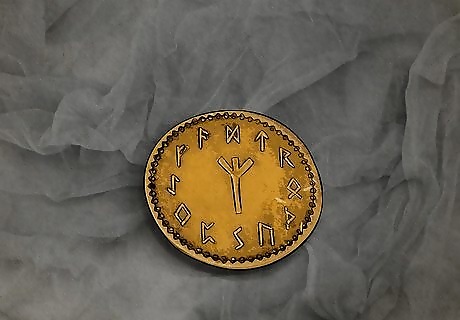
Runes are the letters in early alphabets developed by Germanic tribes. To the modern eye, they look like complex symbols or pictures. They were used throughout modern-day Denmark, Germany, Sweden, and Norway. The oldest runes are found on artifacts like coins, belt buckles, tools, and weapons.
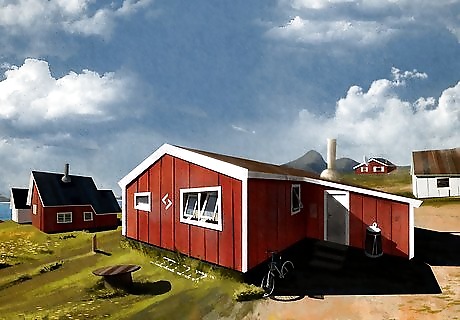
Viking Age runes were used by Nordic people. These areas include modern-day Denmark, Norway, Sweden, Finland and Iceland. Vikings mainly carved runes into stone, wood, and iron. Even after the Viking age, it was common to create Viking rune stones with intricate designs and meanings.
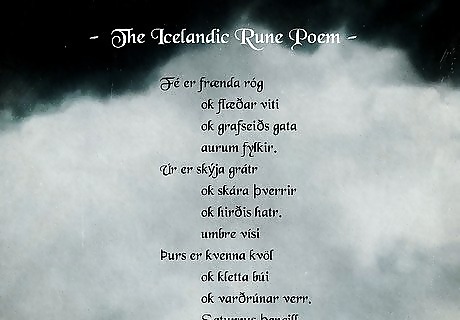
The meaning of each rune comes from the Rune Poems. Three poems still exist, which help people memorize and pass on the folklore of the runes. In Nordic mythology, it is said that the Norse god Odin originally created the runes.













Comments
0 comment